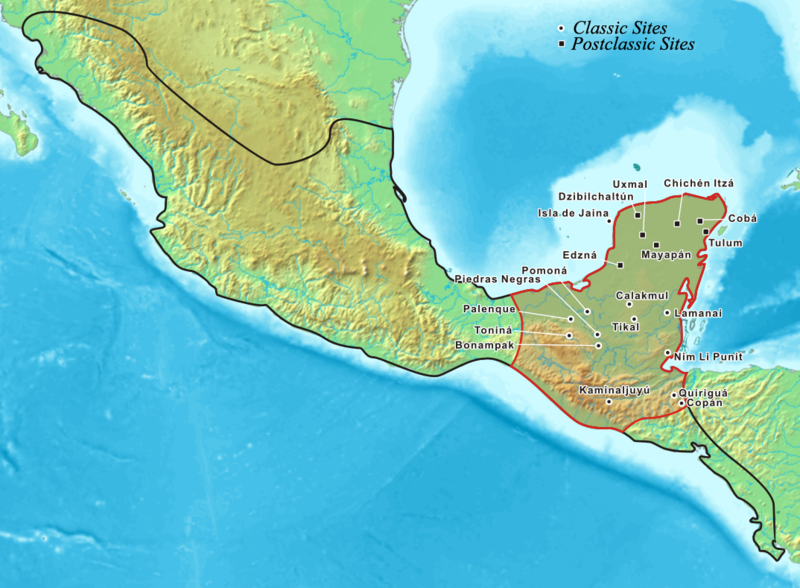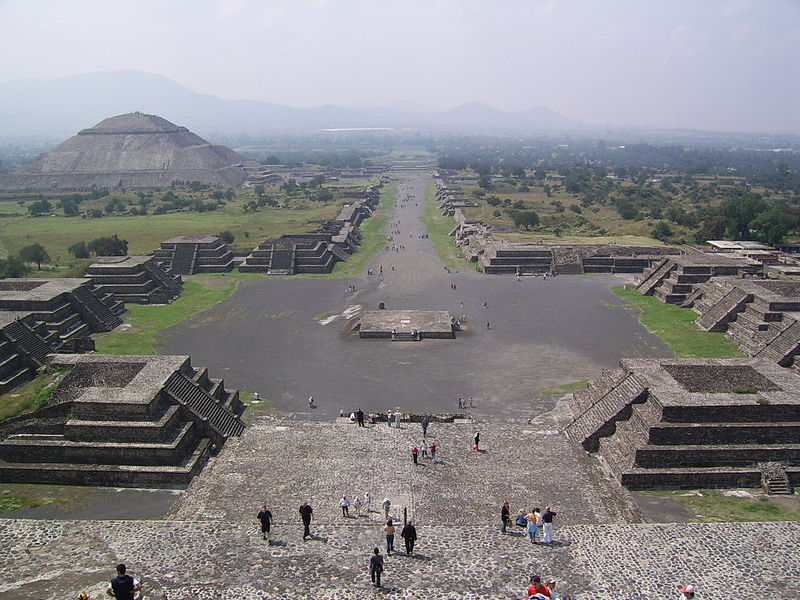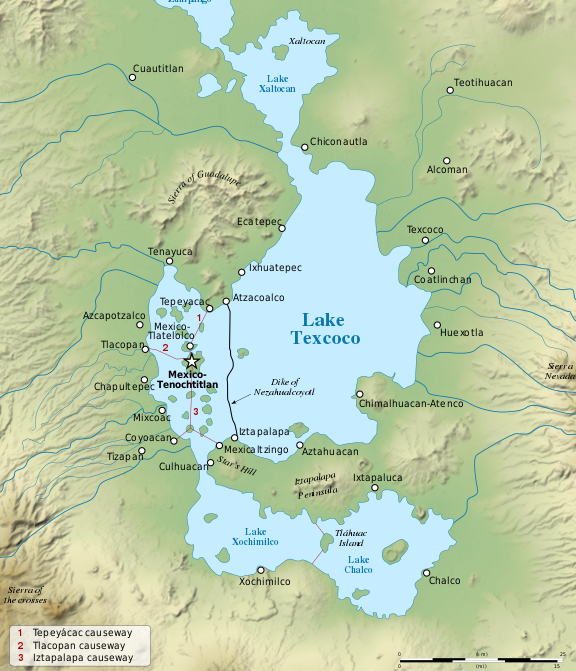Maya and Aztec Civilizations
Episode #9 of the course Human history and the first civilizations by Brian Fagan
Welcome to Lesson 9!
Now we cross to the Americas, where flamboyant civilizations developed over the past 3,000 years. We begin in Central America, in what archaeologists call Mesoamerica, where the first complex kingdoms developed on the lowlands by the Gulf of Mexico.
Olmec Foundations
Olmec societies developed in a low-lying, humid, tropical homeland with fertile soils. It was here that the Olmec developed a highly distinctive art style around 1500 BC that featured natural and supernatural beings, including a humanlike jaguar.
Olmec culture developed from local roots but had art styles, imagery, and religious beliefs that spread over an enormous area. The most important leaders lived at La Venta and San Lorenzo, two ceremonial centers with plazas, earthen mounds, and sculpture. Olmec society comprised a series of powerful chiefdoms that were typical of a more complex social order.
Between 300 BC and AD 250, common religious systems and ideologies spread over large parts of highland and lowland Mesoamerica. Powerful leaders validated their rule with elaborate ceremonial centers and public ceremonies. The new religious beliefs required the development of a calendar for measuring time, as well as writing and mathematical calculations.
Maya Civilization
Ancient Maya civilization emerged in the lowlands by 800 to 600 BC, coinciding with a rapid development of long distance trade. By 150 BC, the Maya were constructing enormous ceremonial centers like El Mirador in Guatemala, an elaborate complex of plazas, temples, and pyramids.

Map showing the extent of the Maya civilization (red), compared to all other Mesoamerican cultures (black).
El Mirador and other cities collapsed around AD 250, for unknown reasons. Classic Maya civilization developed as the Maya expanded their agriculture by draining swamps and practicing irrigation. By AD 800, perhaps eight to ten million Maya dwelt in the Mesoamerican lowlands. They lived under a series of powerful city states that competed fiercely with one another. Tikal, Copan, and other centers were ruled by dynasties of lords, who claimed divine ancestry.
Maya civilization declined over much of the lowlands after AD 900, partly because of drought, as well as political disorder. But Chichen Itza, Uxmal, and other centers in the northern Yucatan survived until European contact or just before.
Teotihuacan
The great city of Teotihuacan rose to power in the Valley of Mexico in the highlands after 250 BC. It started as a growing village, then became a huge city with more than 120,000 inhabitants living in well-organized apartment precincts. The Great Pyramids of the Sun and Moon, as well as the Temple of the Feathered Serpent, Quetzalcoatl, were the centers of ritual life and elaborate public ceremonies.

Teotihuacan. View of the Avenue of the Dead and the Pyramid of the Sun, from the Pyramid of the Moon.
Teotihuacan flourished off agriculture and long-distance trade with other regions, as well as tribute from lesser states. It collapsed for unknown reasons around AD 750 but remained an intensely sacred place. The later Aztec rulers believed that their great civilization was founded by the gods at Teotihuacan.
Toltecs and Aztecs
The Toltecs achieved power around AD 900 after a period of political upheaval. They settled at Tula, south of the Valley of Mexico, where they built a temple to Quetzalcoatl. A militaristic state, it did not survive after AD 1160, when their capital was destroyed by invaders.
When the first Spanish conquistadors arrived in highland Mexico in 1519, they were astounded by Aztec civilization. The Aztec rulers governed from their capital Tenochtitlan, “the place of the prickly pear cactus,” founded in the heart of the Valley of Mexico in 1325.

The Valley of Mexico with the locations of the main city states in 1519.
Less than two centuries later, Tenochtitlan was the largest city in the ancient Americas. Sixty thousand people assembled at Tenochtitlan’s huge market daily. The great temples of Huitzilopochtli, the sun god, and Tlaloc, the deity of rain, dominated the central precincts. The sun god’s temple, which has been excavated, lay at the core of the Aztec world. Here, prisoners of war were sacrificed at major ceremonies.
Aztec civilization was highly centralized, a patchwork of ever-changing alliances kept together by conquest and the payment of tribute. Everything was run for the benefit of a tiny group of rulers.
When the Spaniards arrived, the state was in danger of being torn about by rebellion. It collapsed in the face of the newcomers and their Indian allies. Tenochtitlan was reduced to rubble. By 1680, an Indian population of about 1.2 million was reduced by disease, slavery, war, and famine to some 70,000.
Tomorrow, in our final lesson, we’ll explore Andean civilizations.
Recommended book
Ancient Mexico and Central America: Archaeology and Culture History by Susan Toby Evans
Share with friends
